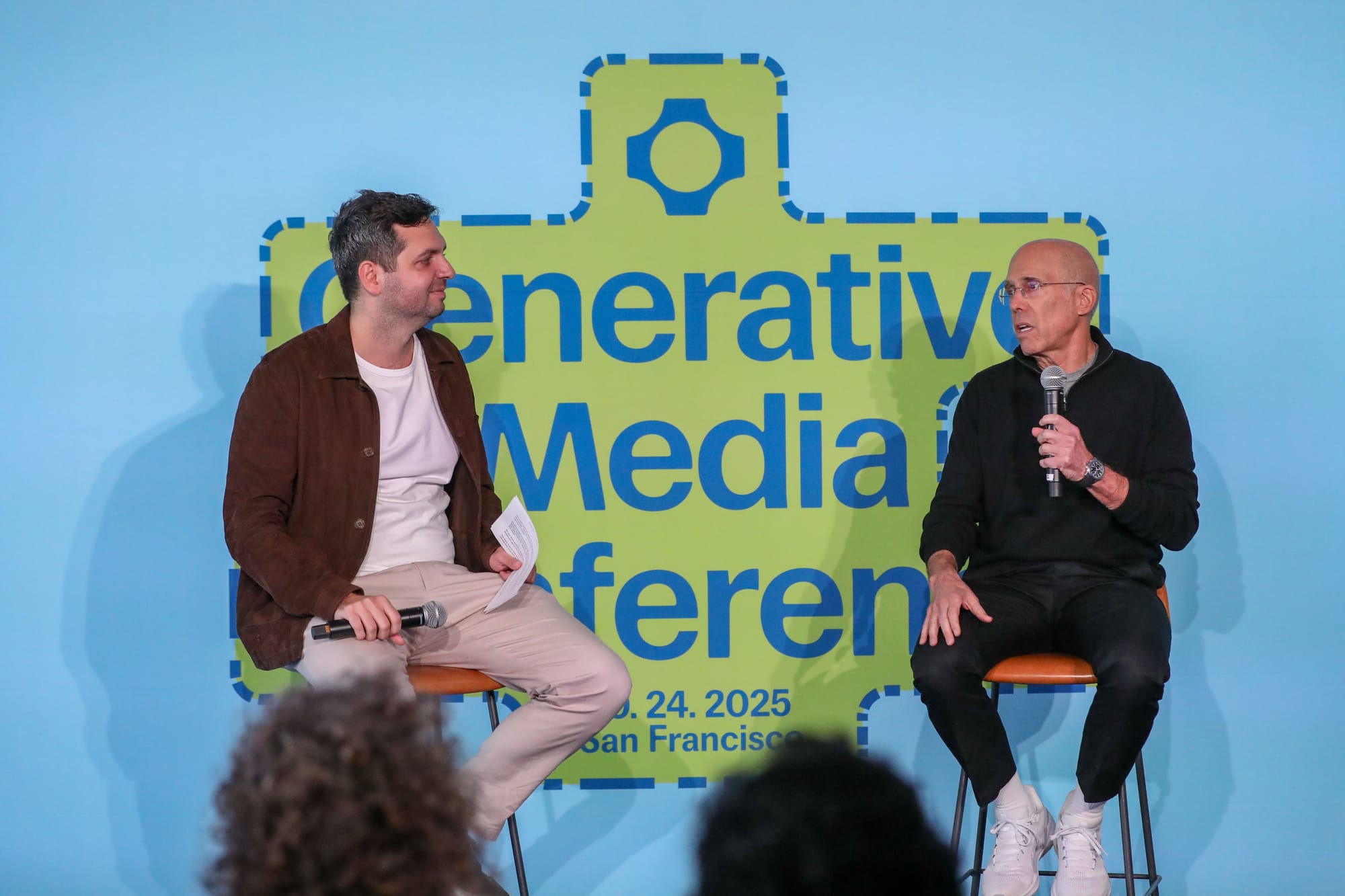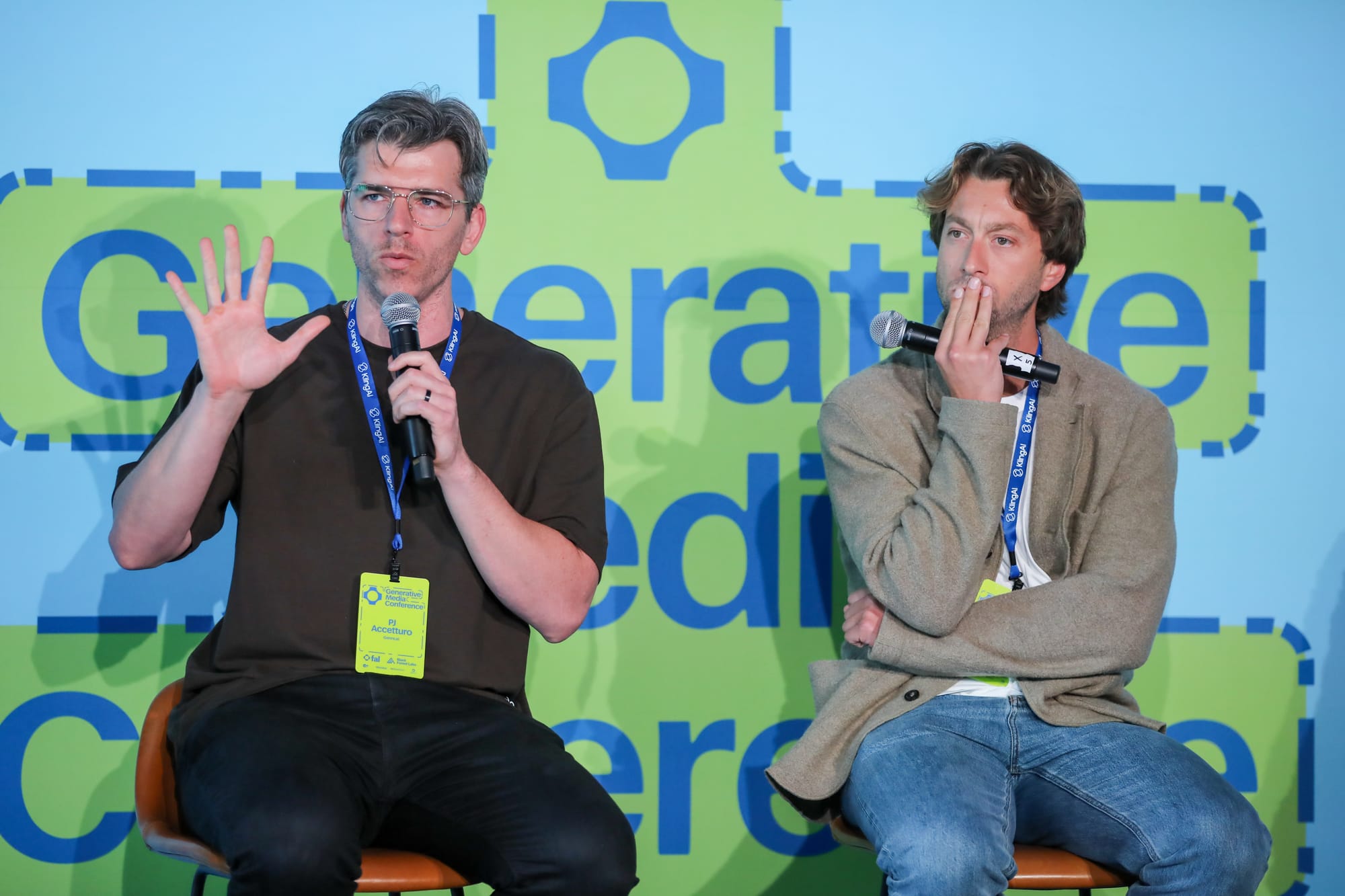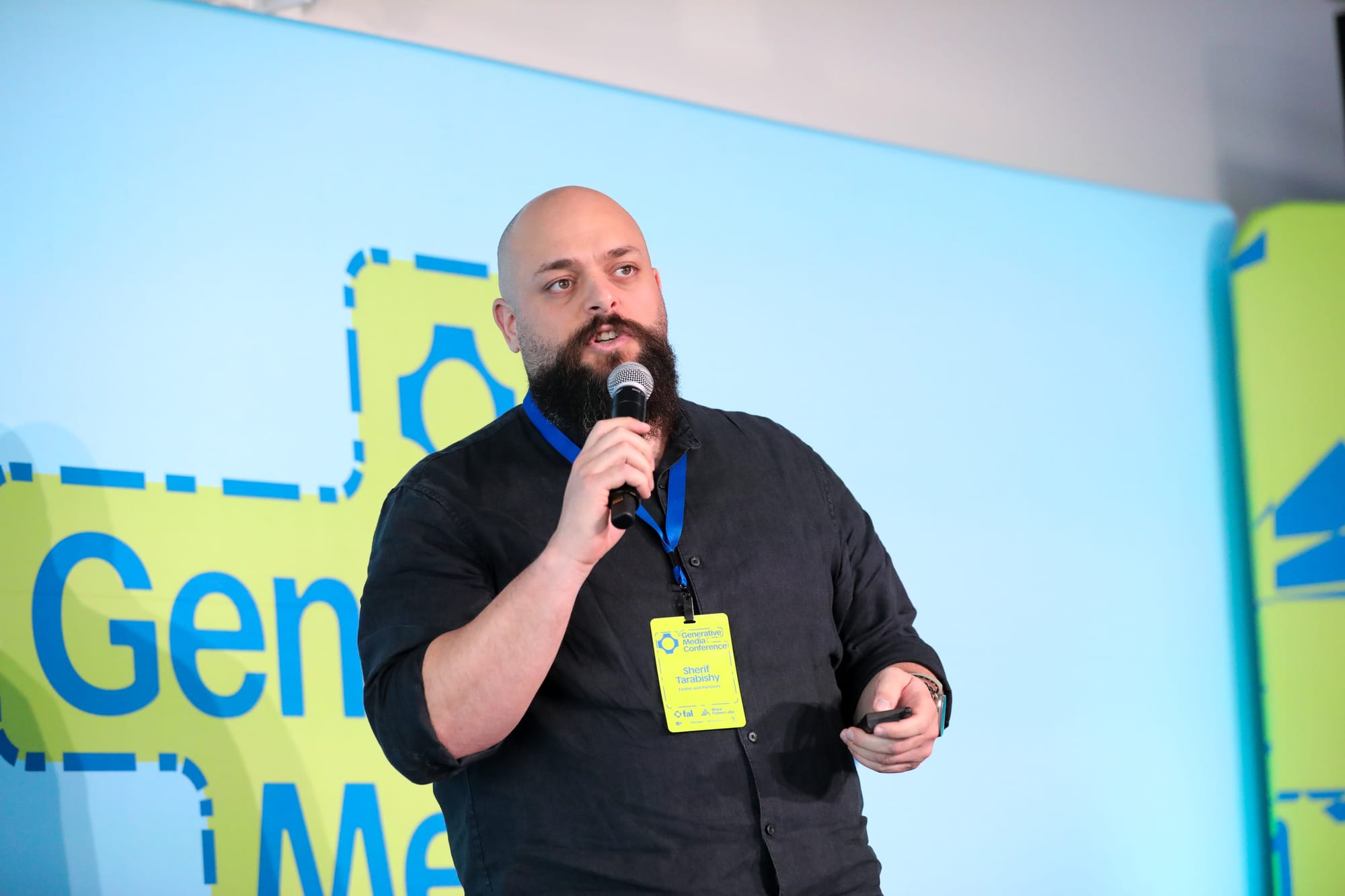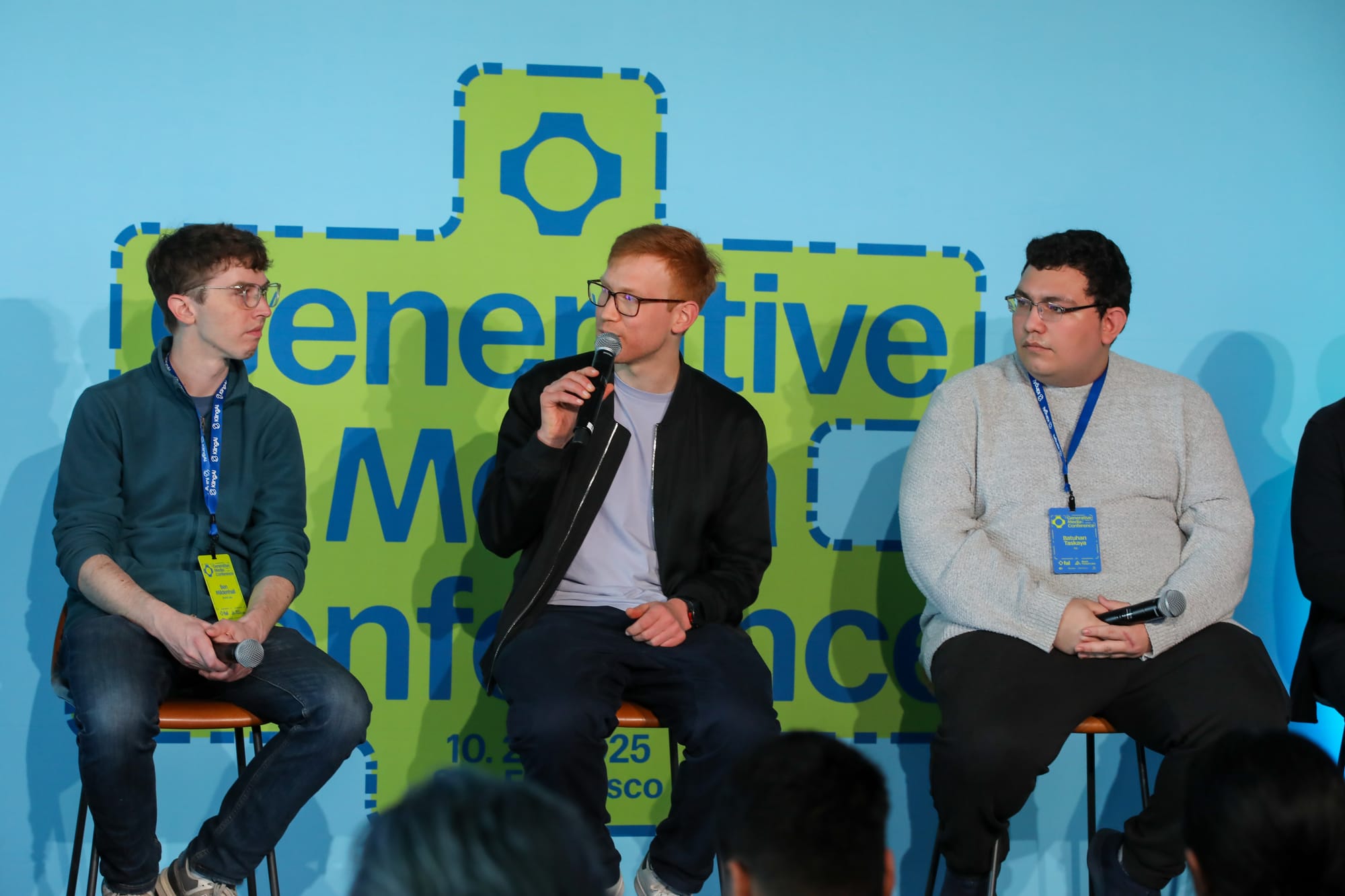Key Takeaways from the First Generative Media Conference

There have been a lot of AI conferences, but none focused on generative media. Until now.
On October 24, 2025, inside the Ferry Building overlooking the San Francisco bay, we hosted the inaugural Generative Media Conference. 300 of the leading founders, researchers, studio heads, architects, advertisers, and investors in the industry gathered for a day of insightful conversations.
For an industry that has expanded quickly but largely in silos, the conference felt like an overdue reunion. For years, those shaping this field have been building in parallel. We were in a position to help bring them together, drawing on the relationships we’ve built across model labs, studios, enterprises, and investors throughout the ecosystem.

What set the tone early was a conversation with Jeffrey Katzenberg, former chairman of Disney, co-founder of DreamWorks, and now founding partner at his own investment firm, WndrCo.
Each transformation in storytelling, he said, followed a familiar path: it was dismissed, then fought internally, and ultimately became foundational. When he championed computer-generated animation at Disney in the early 1990s, making what became Toy Story, many inside the studio saw it as a betrayal of traditional hand-drawn animation. Three decades later, he noted, “three or four of the top ten global films each year are CG animated.”
Which is why he sees generative media not as a threat, but as another shift in tools. What matters now is whether this technology can evolve from visual novelty into reliable infrastructure; something teams can control, scale, budget for, and build on top of.
Three Major Breakthroughs of Generative Media
1. Repeatable systems are unlocking the future
Generative media is no longer defined by what models can produce, but by whether that output can be recreated, edited, and used in production.
This shift has been gradual; GANs made synthetic content possible, diffusion models made it reliable, and today’s unified media systems make generation, editing, and extension possible within a single workflow.

One of the clearest explanations of this arc came from Krea CTO Diego Rodríguez, who traced how the pixel became the turning point for synthetic media. To paraphrase, “once images could be encoded as data that another system could decode back into an image, media stopped being a mechanism for capturing the world and became a mechanism for constructing it.”
These discussions made it evident that companies no longer treat AI-generated visuals as novelty artifacts, but as assets inside structured pipelines, subject to version control, compliance checks, and asset libraries.
2. Generative tools enhance traditional structure

The most grounded insights came from operators shipping high-quality work at scale. PJ Accetturo, CEO of creative studio Genre AI, described his production pipeline as a five-person “pod”: a writer, director, AI cinematographer, AI animator, and editor. Only two of those roles require technical fluency with AI systems. The others function much as they would in a traditional studio, focusing on story, pacing, and taste. Their projects live inside Figma boards, where each shot defines the model, camera angle, character identity, and lighting.
The focus here isn’t hyperrealism or full automation. It’s operational and creative control: how to reliably hit a brand tone, narrative arc, or client deadline using a combination of human judgment and configurable models.
3. Massive adoption is happening behind the curtain
Beyond filmmaking, some of the most compelling demonstrations came from industries that are less visible to the public eye.

One of the most practical case studies came from Sherif Tarabishy of Foster + Partners, an architecture firm responsible for some of the most recognizable buildings made this century. He outlined how generative systems are used to rapidly generate building layouts, simulate sunlight and airflow, and allow clients to walk through mixed-reality models before construction begins. On active construction sites, robots and cameras compare the physical structure to the digital plan in real time and flag deviations early, compressing decision-making cycles from weeks to hours.
In commerce, Shopify emphasized precision over novelty. Rather than artistic compositions, what matters are SKU-accurate backdrops, consistent shadows, correct fabric textures, and metadata extraction. The long-term goal is a single product capture that can generate a photo set, a motion clip, and a 3D asset in formats like USDZ or GLB, all aligned to brand standards.
Three Challenges That Unlock the Next Generative Wave
1. Control is now the bottleneck
AI can generate convincing content. The challenge now is whether it can do it reliably and under direction: the same character, the same lighting, the same world, across edits and new scenes.
This builds on repeatable systems rather than contradicting them. We can now recreate outputs, but control is about whether we can change just one thing without breaking the rest.

As Andreas Blattmann of Black Forest Labs said, “every new layer of control unlocks a new class of use cases.” So teams are moving from prompt luck to structured control: camera paths, character sheets, motion graphs, color scripts.
And progress is slowing at the top.
Batuhan Taskaya, Head of Engineering at fal, added: “We’re at 95% on image, maybe 80% on video, 97% on audio, but every extra percent now is as hard as going from 0 to 96%.”
2. Scaling is still prohibitively expensive
Technical progress in models is rapid, but operational scaling remains expensive.
Ben Mildenhall, co-founder of World Labs, framed the problem directly: generating persistent, interactive worlds—closer to a game engine than a video—is both a fundamental modeling challenge and “a massive inference scaling problem.”
Even the most advanced systems can only produce short clips in limited environments, consuming orders of magnitude more compute than image models. Video generation is often 10-50x more expensive per output than image generation. Image-conditioned video editing can double that. This makes large-scale deployment across games, education, and live virtual spaces cost-prohibitive.
3. Significant Capital Flow Shifts Expectations
Investment appetite hasn't disappeared, but it has matured. Investors at the conference agreed that demand was significantly underestimated during the first wave of generative AI adoption, particularly in enterprise workflows where AI now functions primarily as a copilot rather than a full replacement.

But capital is becoming more selective. Arsham Memarzadeh of Meritech noted that while top-tier companies are still raising at high valuations, the “middle class of exits is evaporating.” Entry prices are rising across the stack, from chips to models to applications and acquisitions are consolidating around a handful of players.
This isn’t a speculative bubble in the traditional sense because retention curves, usage data, and customer expansion indicate sustained adoption. The market will reward durable infrastructure with undeniable retention and usage patterns, not short-lived novelties.
The Beginning of a Renaissance
The inaugural Generative Media Conference made one thing clear: we’re entering a new creative era. Generative models aren’t replacing storytellers, they’re extending their reach. Each breakthrough, from image to video to live generative systems, expands what’s possible in the hands of creators.
Art and technology have always evolved together. Every new instrument, from the printing press to the camera to CGI, unlocked new forms of expression. Generative AI is the next tool in that lineage, one that lets imagination move at the speed of thought.
Jeffrey Katzenberg put it best; “The advantage has always gone to the people who give storytellers better tools. AI is simply the next one.”


